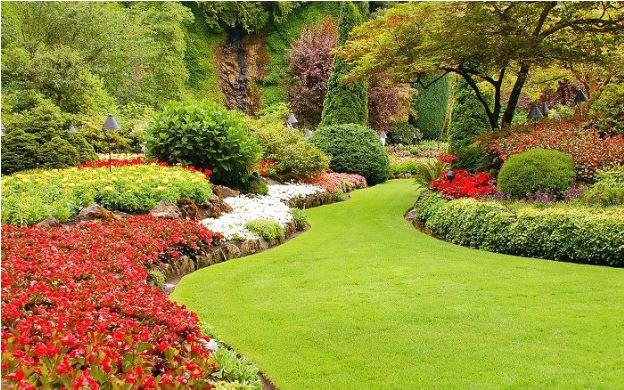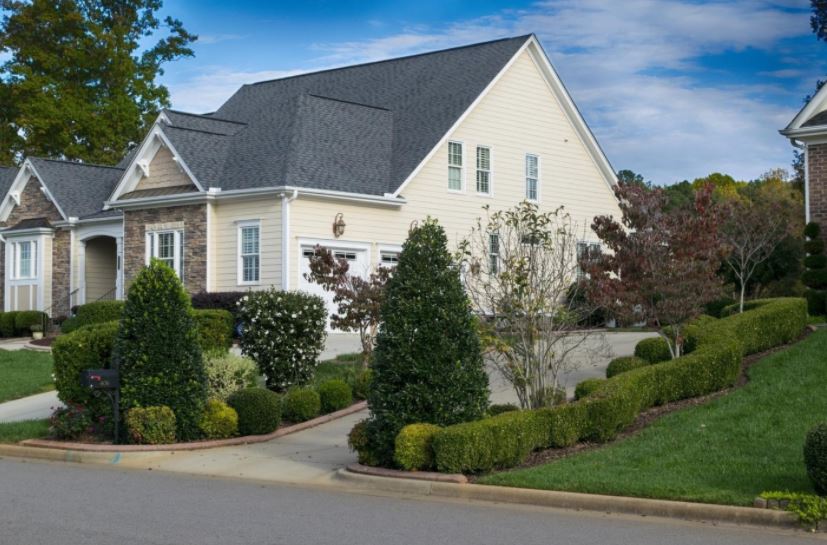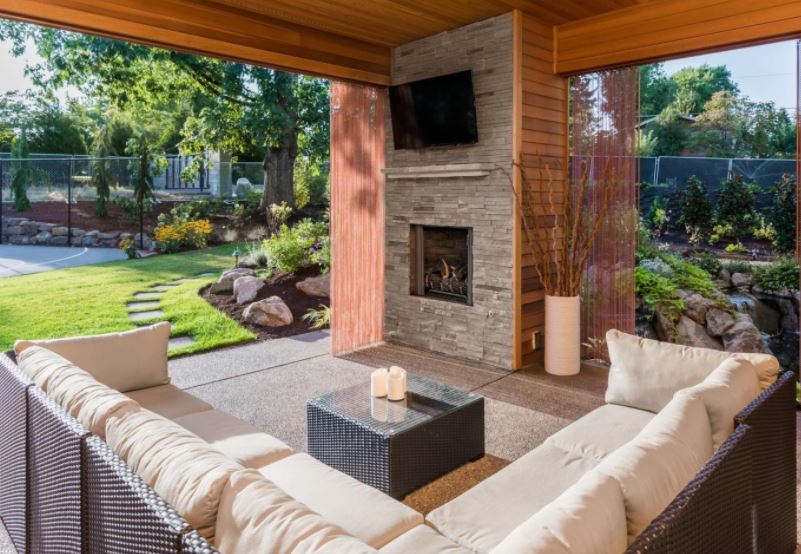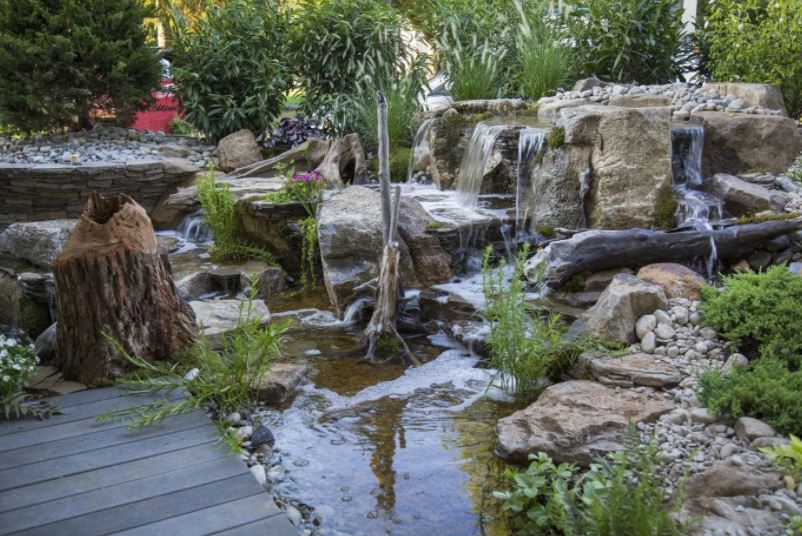
How often have you encountered an article dedicated to the design of a beautiful Hollywood celebrity’s house in Architectural Digest? How often have you thought, “Oh, I wish my backyard looked like that!” but never actually tried to turn your lawn into a masterpiece? Well, if your excuses have been “too expensive,” “too hard,” or “this is going to take a long time,” we will clear those up for you. No more excuses!
In this article, we have summed up all the tips that will help the most inexperienced landscape design homeowners make one of their dreams come true. Hopefully, you don’t underestimate your home’s outdoor space, as your backyard is an extension of what’s happening inside your house.
Some people may think of modern backyard or front yard landscaping as the work of a rigid heart or inorganic soul; on the contrary, this is a sign of a truly poetic person who values their personal space and environment.
Unlike standard landscape design, which primarily concerns flora and fauna, modern landscape design also relies on additional components. Wood and stone accents, minimalist patios, streamlined walkways, and even metal objects all play a decisive role in modern outdoor design planning. Philosophy and geometry are at the core of modern landscape design: how do plants, furniture, and different paths fit together?
Renovating your garden is a great way to add value to your property and create open spaces for relaxation and entertainment. Whether you want to focus on enhancing curb appeal with a reimagined front yard, creating a secluded backyard with dining and entertainment areas, or both, there are many options and features to consider. Use the information below to determine what you want from your new terrain.
5 Amazing Landscaping Ideas
Fancy Driveways
If your driveway isn’t too good-looking, there’s an easy way to hide its unattractiveness. All you need to do is choose the right plants and materials and have your landscape sculpted carefully. You can transform this part of your home into a gardener’s paradise by following simple steps.
For example, create a slightly raised lawn island in the centre of your driveway. Then, add a low boxwood hedge at the back of the island, with roses, annuals, and perennials towering over the hedge in front. Mix different colours, textures, and heights for a fantastic look.
Outdoor Drapes
Curtains and drapes are easy to add around the perimeter of existing verandas, patios, or gazebos, and their impact is hard to overestimate. With just a few simple motions, property owners can close shades to immediately block out the sun and increase comfort in their backyard — or open the shades when the heat has subsided. Retractable awnings, drapes, and shades for outdoor use are available in various fabrics, such as weatherproof or mesh, depending on the shade level desired.
Water and Rocks
A balance between water flow and solid rock remains one of the most popular landscape elements today. The contrast between water and rocks might give homeowners a feeling of peace and serenity.
If you choose this style, we recommend finding a professional landscape designer with experience in this type of design to consult. Experienced landscape designers can transform a dull landscape into the perfect contrast of water and rocks, but trying to do this yourself will most likely leave you with backache, anger, and a plain-looking backyard. Professional landscaping provides immediate enjoyment of a peaceful garden and enhances its long-term value.
Garden Shed
For those who love their plants and spend a lot of time repotting them back and forth, building a shed right in the middle of your backyard might be a great idea. Yes, sheds can also look pretty and fit well into your landscaping style. Besides, you will get additional storage outside your house to move all the mess into!
If you already have a shed that you’re ashamed of, consider renovating it. It’s not take long (unless your shed is the size of your main house), but it will give new life to your backyard.
Kiddies Corner
If you have children or grandchildren who visit you often, you should consider them when designing your landscape. Children will want to play outside, so you may want to design a child-friendly space that allows them to have a safe and fun time. Among the most popular with kids are wooden backyard swing sets, trampolines, and sandpits.
How to Landscape Your Yard (Tips for Beginners)
- Come Up with a Plan
A professional landscape designer usually first makes a land survey of your property, including your front yard and backyard. However, you can easily do it yourself without hiring a professional.
- Draw a bird’s eye view of your property, noting the location of all artificial elements (hardscape) such as buildings, fences, driveways, stone walls, etc. Boulders, trees, and large bushes combine with your hardscape to form the “bones” of your landscape.
- Use graph paper, as it will make your job easier. Using it, you won’t have to worry about exact measurements. A sketch that roughly matches the proportions will do.
- Include the location of your well, septic system, or underground utilities. Orient your plot with a compass and mark your sunny and shady spots.
- Make a Wish List
Once you’ve realized what you already have, you can start making a list of what you would like to have. What should your backyard look like? We recommend beginning with a few general goals. For instance:
- Do you need patio privacy?
- Do you want to block an awful view?
If your garden has flower beds, mark successful plants and fill in the empty spaces with colours, heights, foliage, and the time needed to achieve the desired look. This will help you when buying plants.
Make sure to get the most out of what you already have. Don’t try to turn a dry, rocky place into an organic garden. Instead, use it for a rock garden planted with sedum and other plants that can thrive in harsh conditions.
Also, use containers to highlight difficult areas. This is one of the ways to express your design skills on a small scale, and they can be changed depending on the season.
Explore your area. Plants come in all colours, shapes, and sizes. What kind of landscapes do you like? What colours, shapes, textures, and sizes of plants do you prefer?
- Choose Your Style
Your backyard should complement the architectural style of your home. Gardening is like decorating the interior of your home, but instead of fabrics, paint, and furniture, you will use the colour, texture, shape, size, and placement of plants.
- Formal. Straight lines, symmetry, elegant accents such as statues and fountains, manicured lawns and trimmed hedges define this style. Colour is secondary to texture, and the mood is refined and serene.
- Informal. This style is a balance between formal and natural styles. It includes many curves and colours, lush growth, asymmetry, and naturally shaped trees and bushes. The mood is comfortable and relaxing.
- Natural. This style mimics nature, requires little maintenance, and needs to blend in with the environment, which can be anything from a meadow of wildflowers to a swamp. A mood can reflect unbridled chaos or simply energetic, natural abundance.
-
Assessing Your Needs
As we mentioned before, think of your kids or grandkids, if you have any, when making a plan for your desired garden landscape. Children need areas where they can play. By the way, it’s also the same with pets. Try “bulletproof” plants that can tolerate some abuse, such as stunted sedum or ground phlox, which can tolerate some trampling.
- Think about your entrance. Do you want a cosy front garden that guides visitors to your door? Use straight lines and paths to guide visitors wherever you want.
- Don’t be discouraged by the small garden area. You can use tricks to make small areas appear larger, such as lining up paths, gates, and trees to create lines of sight that allow the viewer to move from one area to another. Also, having many small groups of bright colours can make a space cluttered, whereas combining similar colours and textures can really open up a small space.
- Create your own getaway spot. Use larger shrubs and ornamental grasses to create an area for rest and relaxation, such as this secluded bench. Here you can observe the garden and enjoy the fruits of your labour.
- Use Landscape Design Software
When designing your ideal garden, you might know the design’s exact specifications but have no idea where to start. Landscape design software even helps generate ideas that we can translate into our landscaping. It also often happens that our idea cannot be realized with the landscape. In such a situation, landscape design software can help you check if your design idea is compatible with the landscape or not.
The main reason for using the best software for designing a landscape is to save time, resources, materials, and money; you can create your dream landscape from the comfort of your chair. The overall landscape design process can be tedious without software. The program helps you visualize the elements that will make your landscape beautiful before the construction begins. In addition, the software allows you to predict the material required to create your landscape and whether the entire landscaping cost will fit within your budget. Considering all the limitations, the software helps you make your fantasies come true.
Some of the benefits associated with landscape design software include:
- The entire landscape design is digitized before construction.
- Precise and efficient landscaping is planned.
- Budget planning is available.
- It increases your productivity and lets you stay on top of the latest trends in landscape design.
- The likelihood that any construction activity will go wrong is very minimal.
- The program helps landscape designers quickly and easily visualize the entire project.
Besides, it becomes easier to understand your landscape long before construction.
Conclusion
Minor but constant improvements over the years can turn your backyard into the paradise you imagine. Thankfully, there are exceptional modern programs that allow professional landscape designers and DIY homeowners to realize their creative potential and develop a dream garden design, as landscape design software can assist in rendering their outdoor projects before construction.
With the help of a realistic and well-thought-out landscape design plan, you can spread work and costs over several years. Do this step by step so you don’t eventually become overwhelmed and exhausted by your project. Remember: you are creating space for yourself and your family, so this process should be exciting and fun!




 POSTED BY
POSTED BY 

